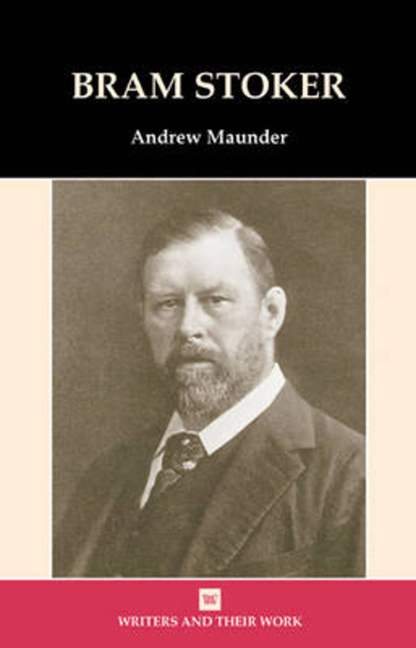2 - London in View
Summary
London is the setting for several of Bram Stoker's novels and in this chapter we will examine three of the most striking of these works. The texts - The Primrose Path, published in 1875, Dracula, published in 1897, and The Jewel of Seven Stars, published in 1903 - can be taken as examples of Stoker's work at three different periods of his career. They also demonstrate something of his ability to write within different genres. The Primrose Path is a temperance (anti-alcohol) novel and ‘emigration parable’; Dracula is a vampire novel, and also uses some of the tropes of the imperial Gothic and the fantastic; and The Jewel of Seven Stars is an Orientalist, Gothic novel, which exploits the mystique and exoticism of Ancient Egypt. The setting for these novels - London - was where Stoker himself lived, from 1878 until his death in 1912. As he puts it in Dracula: ‘mighty London’, ‘I had the idea of going to London…I long[ed] to go through the crowded streets…to be in the midst of the whirl and rush of humanity, to share its life, its change, its death, and all that makes it what it is.’ (D 50-1) It would be in London, Stoker recalled, that ‘as a writer I should have a larger scope and better chance of success than at home.’ (PR 44).
One of the striking things about all these texts is that they give us a rather double-edged view of the capital. London is a stronghold of civilization but also a place that is extremely vulnerable to attack and can be a place of danger. Both Dracula and The Jewel of Seven Stars convey this in fairly lurid and ‘fantastic’ ways, starting off in the strange and alien worlds of Transylvania and Ancient Egypt but then depicting how their monsters have risen up to find their way to London, the supposed impregnable centre of the modern world. Showing the terrifying eruption of the supernatural and other spectres of monstrosity - demonic females, doubles, taboo desires, themes of infectious disease, unlawful (sexual) desires, subterranean spaces - all packaged together in a fragmented narrative and sometimes confusing narrative structure, Stoker uses many of the conventions of what we have come to recognize as Gothic writing.
- Type
- Chapter
- Information
- Bram Stoker , pp. 29 - 69Publisher: Liverpool University PressPrint publication year: 2005



